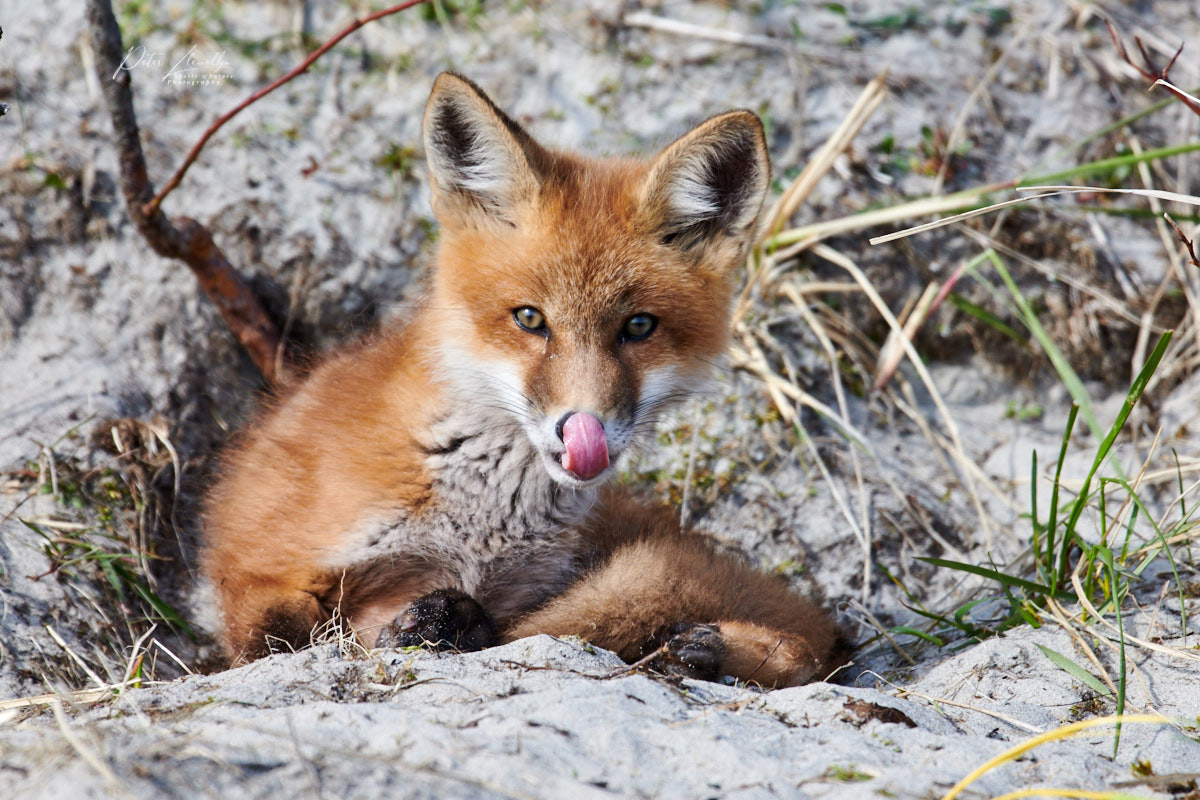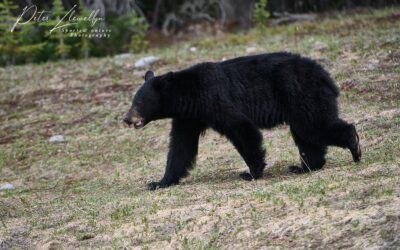Driving to one of my regular beaches to search for migrating and resident shorebirds a few days ago I suddenly glimpsed a flash of red in the sand dunes beside the road. Pulling over I was astonished to see a fox sitting in the narrow strip of dunes between the coastal road and the beach.

Red Fox among sand dunes, Crescent Beach, Nova Scotia, Canada
Nikon Z6, Nikkor 70-200 f2.8 lens at 130mm, 1/320sec @ f8 ISO 320. Manual mode with auto ISO turned on.
Switching off the engine and lowering the car window did not seem to disturb the animal one bit, then suddenly another head popped up out of the dunes followed by another. I had inadvertently discovered an active foxes den.
Normally to shoot foxes near their den requires staying well back, using very long lenses, lots of patience, using a long slow approach. Often a blind is necessary or, at the very least, remaining in the vehicle while shooting. Remaining in the vehicle in this case was entirely impractical as there were only a couple of small pullouts to get off the road, neither in a position where I could photograph from.


Red Fox among sand dunes, Crescent Beach, Nova Scotia, Canada
Nikon D850, Nikkor 500mm f4 with TC14 teleconverter (700mm) 1/2500sec @ f8 ISO 800. Manual exposure with auto ISO
I was creeping out of my vehicle while trying not to disturb the foxes when I suddenly noticed a runner coming up the road, not only that but she was going to pass within a few feet of where the foxes were sitting. ‘That’s that’ I thought, expecting to see the foxes vanish in an instant, but they took no notice whatsoever. I realised that they had become completely habituated to traffic, joggers and walkers on the road side of the dunes, and beachgoers on the other.
I have now returned several times, always early in the morning when the sun angle and direction is absolutely perfect for photography. Each time I have learned more about the individual characters of each animal.


Red Fox among sand dunes, Crescent Beach, Nova Scotia, Canada
Nikon D850, Nikkor 500mm f4 1/2000sec @ f7.1 ISO 560. Manual exposure with auto ISO
One of the kits is completely laid back and pays no attention to any disturbance, traffic or human. The other is a little more wary, always keeping one eye on anyone nearby, but still never seems to feel threatened. In fact, the more I return the more they completely accept my presence as part of their normal life.


Red Fox among sand dunes, Crescent Beach, Nova Scotia, Canada
Nikon D850, Nikkor 500mm f4 1/1000sec @ f6.3 ISO 360. Manual exposure with auto ISO
Interestingly, foxes generally mate for life, and after the kits are born both parents generally attend to their needs. At this den I have only ever seen one adult, so I am not sure if one has gone missing or that is simply a coincidence. Looking carefully at my images it does seem that it is always the same adult, so I assume it is the vixen. If she is on her own she is doing a great job as both her and the kits are in fabulous condition.
Shooting Etiquette
Remember that at all times when photographing wildlife no image is worth causing distress to the animals involved. If you are changing their normal behaviour in any way you are too close.
Approach slowly, a bit at a time. Keeping a low profile often allows you to get much closer to your subjects without unduly disturbing them. Using your vehicle as a blind is a great way of getting close, animals don’t usually associate cars, which of course they see all the time, with a threat.
You can see from all the images above that these foxes are certainly concerned by my presence and are totally relaxed.




